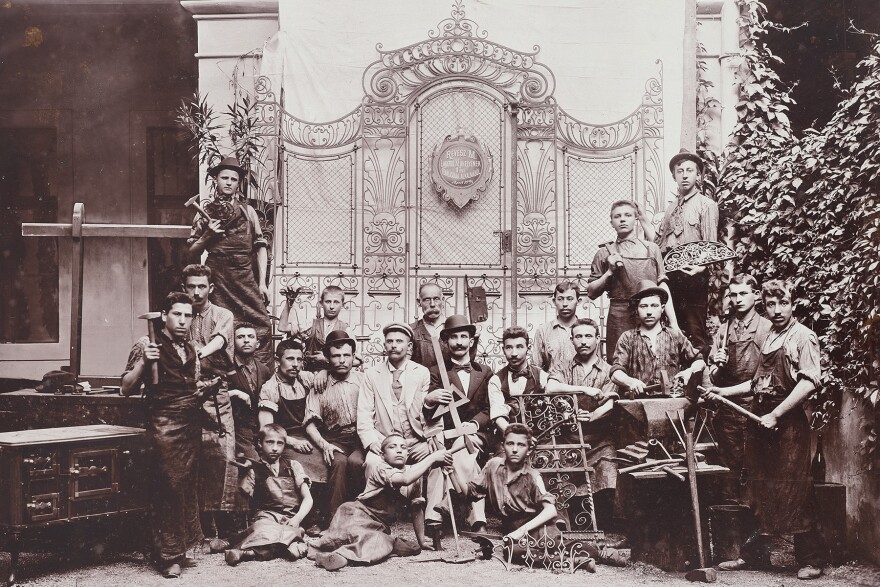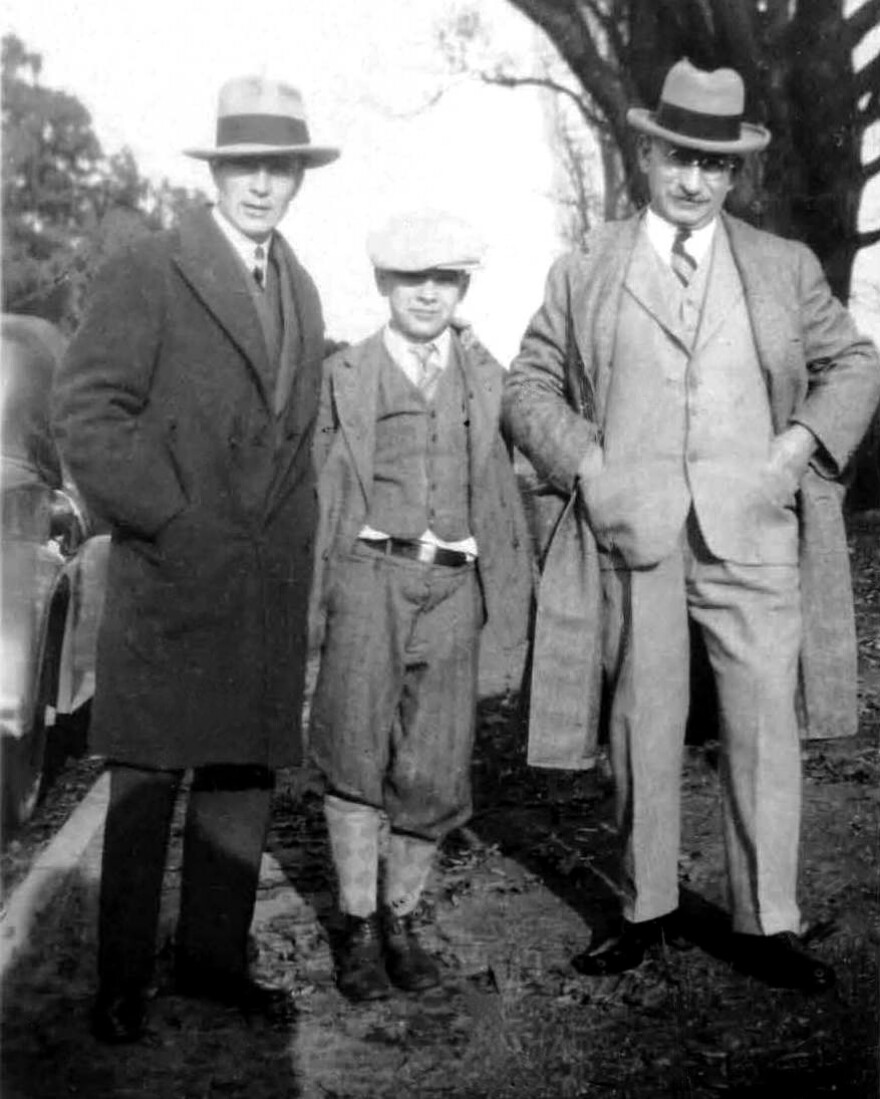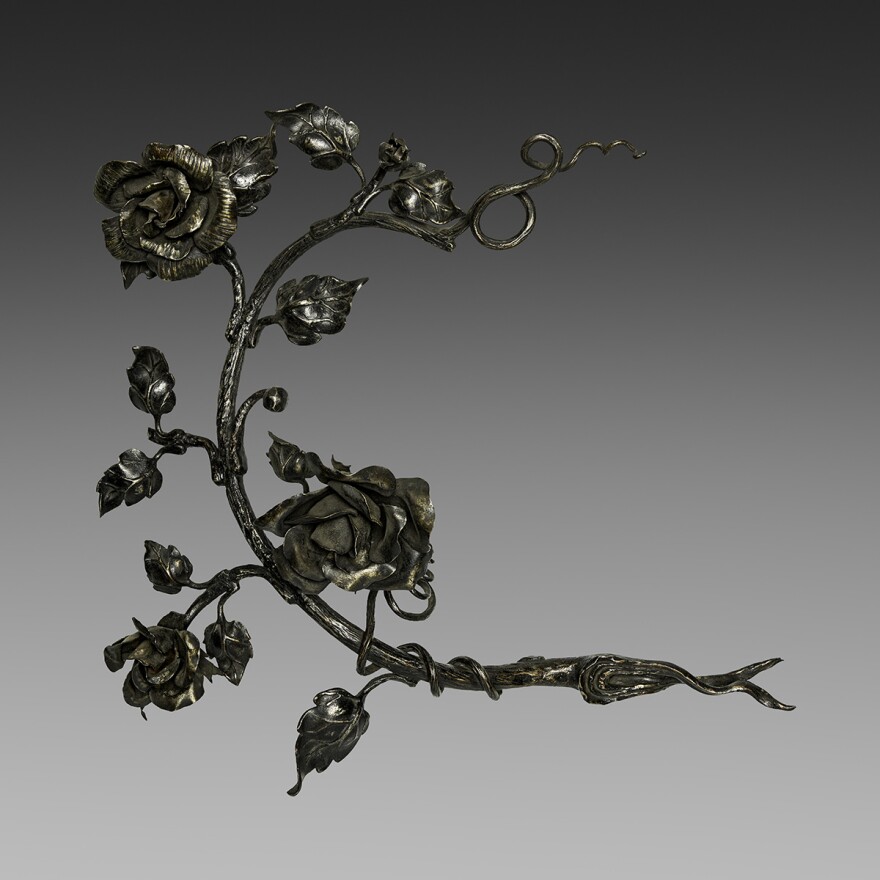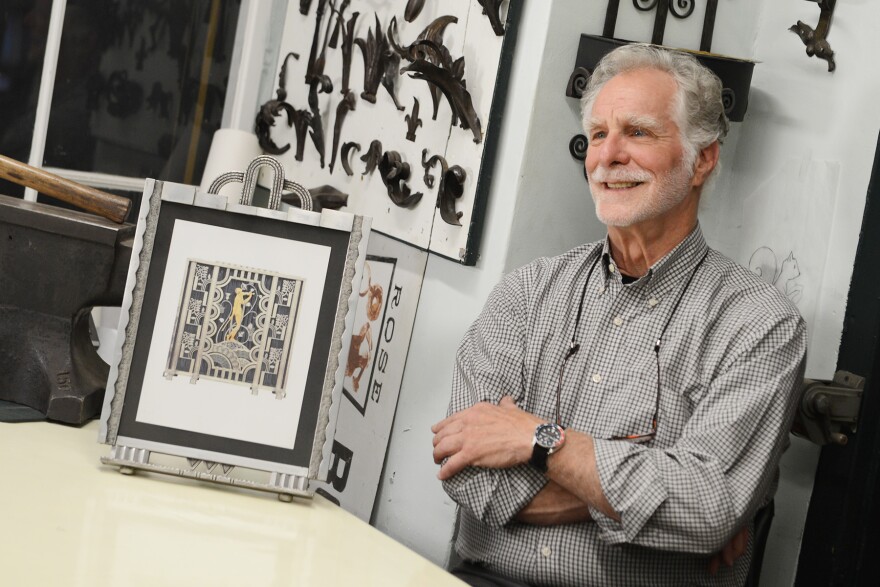Art Deco may seem synonymous with places like New York City or Paris, where the design movement originated a century ago. But there’s a strong presence in Cleveland too.
Not long after its founding in 1904, Rose Iron Works quickly emerged as a leader in the design and manufacturing of decorative metalwork across the United States. During the 1930s, the firm created some of the most iconic Art Deco ironworks in the country.
Still operating out of its longtime home on East 43rd Street, Rose Iron’s enduring legacy is celebrated with an exhibition at the Cleveland Museum of Art alongside the 100th anniversary of Art Deco. “Rose Iron Works and Art Deco” is on view through Oct. 19.
“Rose Iron Works is really a Cleveland treasure. It is an American treasure,” said Beth Edelstein, senior objects conservator at the Cleveland Museum of Art. “It is the oldest continually operating decorative metalwork manufacturer and designer in the United States.”

The exhibition follows the early influences and techniques of the firm’s founder, Hungarian-born metalsmith Martin Rose, who left his shop in Budapest around the turn of the century for better opportunities in America.
“[The exhibition] goes from about 1904 to the early 1930s, really explaining the connection of Martin Rose to the European tradition of ornamental metalwork, how he brought those techniques, that level of sophistication and education to Cleveland, and how he really responded to movements in Europe, including Art Nouveau and Art Deco,” Edelstein said.

The design work of Paul Fehér, a highly skilled draftsman and artist working in Paris, caught the eye of Rose. After numerous failed attempts to lure Fehér to Cleveland, Rose eventually convinced Fehér to join Rose Iron Works in 1929.
“The partnership between Fehér and Martin Rose really produced some of the most iconic examples of Art Deco metalwork in Cleveland at that time,” Edelstein said. “For instance, the ‘Muse with Violin Screen’ that is the centerpiece of this exhibition.”
Rose wanted Fehér to design a piece that could demonstrate Rose Iron’s capabilities in the Art Deco motif. Not a fire screen but a room decoration, “Muse with Violin” stands five feet tall. Its steel frame is adorned with decorative flowers and angular patterns surrounding a central figure said to be modeled off of Josephine Baker, a popular jazz entertainer at the time.
“The 'Muse with Violin Screen' has been shown at numerous museums all over the United States,” said Bob Rose, third generation owner of Rose Iron Works. “It is probably one of the most recognized examples of the decorative style, and it's enjoyed a lot of publicity.”
Rose’s favorite piece in the exhibition, however, predates the Art Deco period.

“When my grandfather arrived in Cleveland, blacksmiths fixed buggies and shoed horses. They did not do very refined, delicate work,” Rose said. “In order to show potential customers what he could do with this new skill set, he crafted a sprig of roses which he carried with him on sales visits, if you will, to demonstrate what his personal skills were and what could be done with metal.”
At the time Martin Rose established his company in Cleveland, the city was booming from success in automotive and steel manufacturing. Early clients were wealthy businessmen who commissioned decorative ironwork for mansions along Euclid Avenue, the former Millionaire’s Row.
But by the time Fehér joined at the end of the ‘20s, the Great Depression devastated the local economy and demand for decorative ironwork around the city dried up.
“I would say that for Cleveland, Art Deco really represents Cleveland's heyday, a period of time when Cleveland was thriving, when everything was new and exciting,” Edelstein said. “Cleveland has such a history of making, and particularly in metal, so this connection of ornamental metalwork and the Art Deco style really connects with Cleveland's history in a very direct way."

Learning from history
During a 2021 presentation to the Art Deco Society of New York, Bob Rose shared something he’d been wanting to do his entire life: find someone to commission Rose Iron Works to create a new screen based off of Fehér’s preliminary sketch for “Muse with Violin.”
“About a year later, I got a phone call saying, ‘I was part of that presentation, I heard your comment, I might be that person,’” Rose said.
It was a bittersweet opportunity, however, as the caller required the screen go to a private collection and never be available for public viewing.
“About a year into its production, we were spending hundreds and hundreds of hours on this,” Rose said. “It became evident that when it was shipped, it was going to define seller's remorse. We were going to miss that thing terribly.”
At the cost of his kids’ inheritance, Rose joked, a third screen was soon in the works. His concept was to create a three-piece series, all with identical backgrounds and outer frames but different figures in the center.
The original “Muse” was studied in great detail, with every shape and texture representing a unique and specialized skillset. His grandfather’s custom-made tools, discovered on a dusty shelf in the workshop, were used to make many identical elements while new techniques, like 3D printing and laser cutting, added innovation to the process.
As for designing the central figure for the third screen, Bob turned to his wife for inspiration.
“I carry a picture of her every day in my wallet that is of her smelling cherry blossoms in D.C. years ago," he said. "So in my mind, the third muse became ‘Muse with Flower,’ and it depicts the same figure reaching up and smelling a flower.”
A lasting legacy
A grille from a door in the Halle Brothers department store. Another grille from a banker’s mansion in Cleveland Heights. Though certain buildings or businesses may only exist in Cleveland history books, much of Rose Iron's metalwork that once adorned those structures still remains.
Through three generations of Rose leadership, the focus was never on seeking recognition but delivering quality craftsmanship in every facet of the company’s work.
“It's an amazing honor to have the show, to be mentioned,” Rose said. “We tease a lot here about being a best kept secret. We don't talk a lot about ourselves, we just make metal things.”











